You are using an out of date browser. It may not display this or other websites correctly.
You should upgrade or use an alternative browser.
You should upgrade or use an alternative browser.
PLA Navy news, pics and videos
- Thread starter Jeff Head
- Start date
My bad. Hmm... unfortunately I don't seem to have edit or delete privileges.
FarkTypeSoldier
Junior Member
This video shows the daily maintenance of Type 051B DDG 167 Shenzhen after a sea exercise, the construction of PLAN's first stealth ddg with its Chief Engineer, interview of crews operating weapon systems and some basic information of this destroyer. Also this featured DDG has VLS cells after its mid-term refit, not the original 167.
Documentary is in Chinese but from the documentary, no translation is needed, just feel it.
Enjoy
Last edited:
So what is the relationship with PLAN?2 articles about Yutong.
760 Yutong buses to be operated in Kazakhstan
2020-05-20
Recently, Yutong received the orders of 760 gas buses for Kazakhstan, of which 590 units are purchased by the Shymkent municipal government, and another 170 units will be put into operation in Atyrau city. At present, the buses of the two orders have been delivered, and all vehicles will be put into operation at the end of May and the beginning of June.
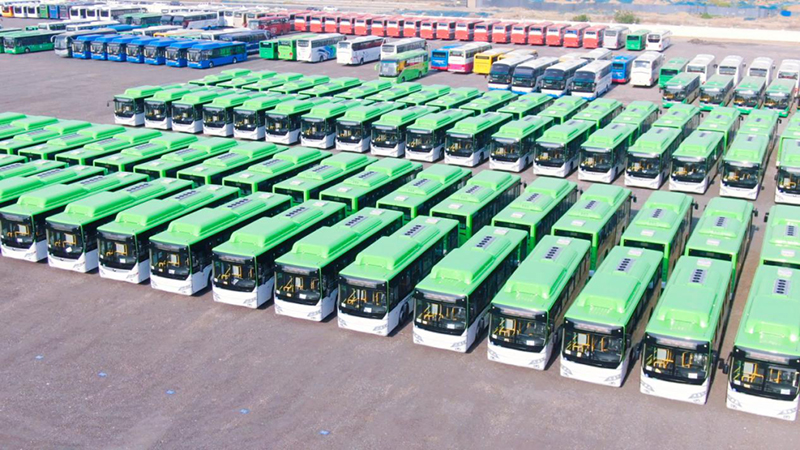
The operation of these vehicles will greatly improve the public transport situation in Kazakhstan and create a good public transport environment for the cities. At the same time, the application of clean energy vehicles will also effectively reduce the air pollution in cities and contribute to the urban environmental protection.
As a municipality directly under the central government, Shymkent has a population of 1.01 million and is the most dynamic city in southern Kazakhstan. Atyrau, as the petroleum city of Kazakhstan, is also one of the important cities in the country. In respect of the public transport of the two cities, the buses are antiquated and need to be replaced. It is learned that the models purchased by Atyrau this time are Yutong ZK6108HGH and ZK6852HG, and the models purchased by Shymkent are Yutong ZK6108HGH and ZK6118HGA.
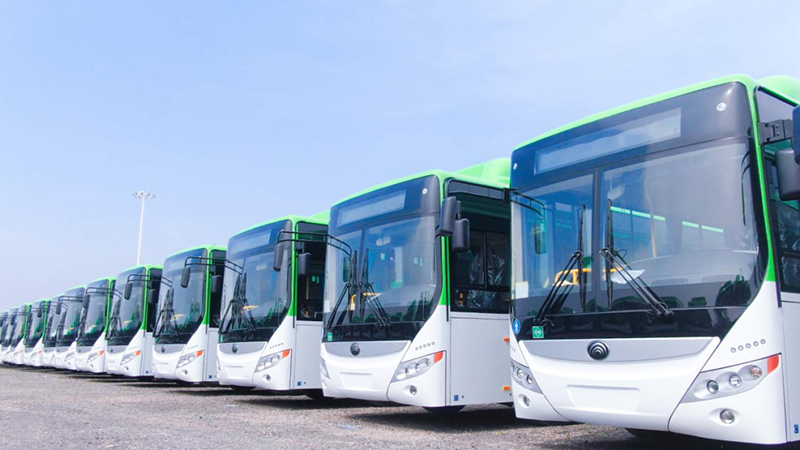
The three Yutong's classic bus models with different lengths will meet the passenger carrying demand on different routes, and serve the local residents with higher quality, helping the upgrading of Kazakhstan's urban public transport system.
It is reported that Yutong has entered the Kazakhstan market early in 2005. With the gradual increase of product portfolio and continuous improvement of services, Yutong embarked on a fast growing journey in Kazakhstan in 2010. As of December 2019, Yutong's total sales in Kazakhstan exceeded 2,000 units, accounting for more than 40% of China's large and medium-sized buses exported to Kazakhstan during the period. Nowadays, Yutong has become the bus brand with the largest quantity of the large and medium-sized buses in the Kazakhstan market.
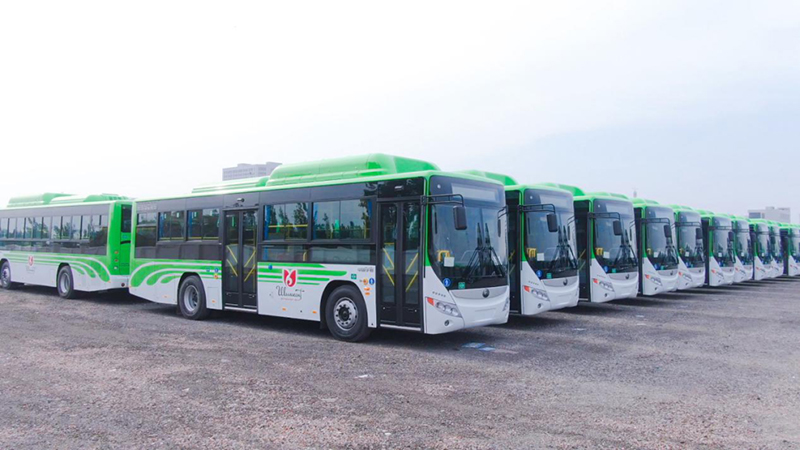
With persistent efforts, Yutong’s products and brand have been widely recognized in the local market, showing the strength of Chinese manufacturing and Chinese brand to the world. So far, Yutong totally has eight service stations and one spare part warehouse in Kazakhstan. Every year, Yutong can provide convenient and comfortable transportation services for more than 2 million people in Kazakhstan.
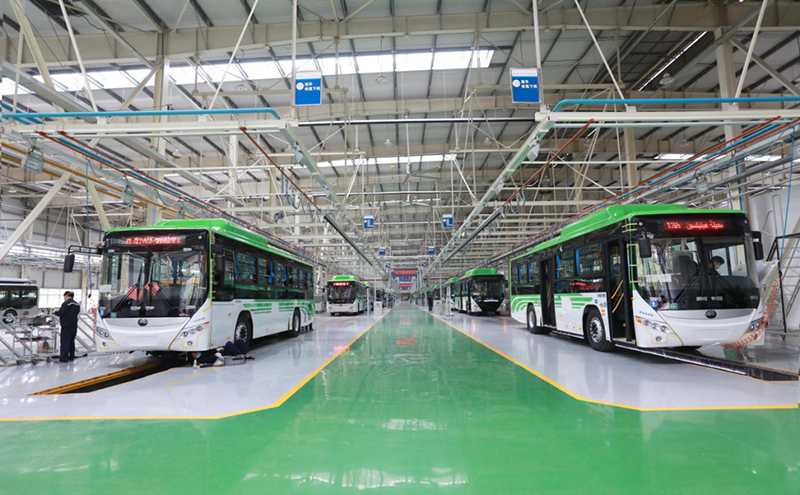
In addition, Yutong is still deepening its services continuously. In order to ensure the smooth operation of the 590 gas buses, Yutong has worked out a special service plan, including vehicle maintenance, training on driving habits, etc.

In the future, Yutong will continue to adhere to the customer orientation philosophy, and help enhance the development of Kazakhstan's public transport with high-quality products and services, thus showcasing the strength of Chinese manufacturing.
This video shows the daily maintenance of Type 051B DDG 167 Shenzhen after a sea exercise, the construction of PLAN's first stealth ddg with its Chief Engineer, interview of crews operating weapon systems and some basic information of this destroyer. Also this featured DDG has VLS cells after its mid-term refit, not the original 167.
Documentary is in Chinese but from the documentary, no translation is needed, just feel it.
Enjoy
What are those metals bars in 14:46 for ?
Hendrik_2000
Lieutenant General
I like how it said it takes 3 decades to build an oceangoing navy of consequence. Incidentally it was on 22 May 1980, 30 years ago, that Adm. Liu Huaqing visited the Kitty Hawk which affirmed his belief that China should have its own carrier and blue water navy.
Yup he is rightly called the father of Chinese aircraft carrier program At the end of his life he said he can't close his eyes until China built carrier Here Korean magazine tribute to Li Huaqing. Is he of Korean ethnicity? why this Korean magazine called it Korea's Li Huaqing?
Longing for Korea’s Liu Huaqing
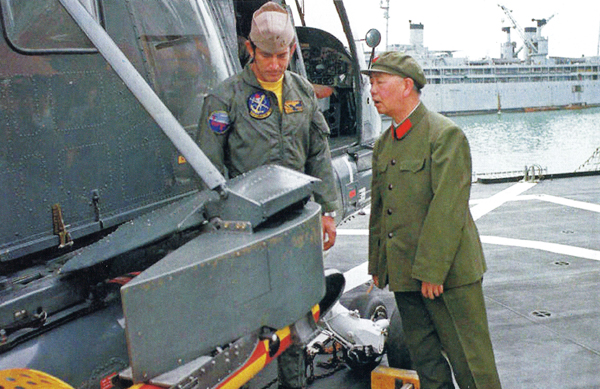
The People’s Liberation Army of China reveres two heroes with the title of “father.” Qian Xuesen is called the Father of Chinese Rocketry, and Liu Huaqing is the Father of the Chinese Aircraft Carrier. Qian was the most prominent rocket scientist of his time, and after studying and researching in the United States, he returned to China and established the foundation of China’s rocket and space program. Admiral Liu was trained on the field, spending his whole life in battle and advocating the grand vision of a Chinese Navy in the Pacific. If he were alive, he would have been proud of the Liaoning, China’s first aircraft carrier.
In January, when Liu was nearing his death, several naval commanders visited his residence. His last words were, “I cannot close my eyes if I don’t see the aircraft carrier.” The commanders promised that they would make sure the first aircraft carrier was commissioned by the next year, and he closed his eyes. In 1970, Liu, then the deputy chief of naval operations, first proposed reviewing the needs of possessing an aircraft carrier at the meeting. Other commanders thought he was crazy to mention an aircraft carrier when the Navy did not have a destroyer and Chinese people were starving in the aftermath of the Cultural Revolution. He struck the desk with his fist and shouted, “One-third of Chinese territory is the surrounding seas. How can we defend it? Have you forgotten how the country was ripped apart by the Western powers?” That’s how the “territorial waters theory” became the foundation of Chinese naval strategy.
After the meeting, he created an aircraft carrier taskforce to research models, strategies and operations involving aircraft carriers and related technologies. He devised plans to educate scientists and technological experts. In 1975, he pitched his proposal to Mao Zedong for a week and in 1980, Liu visited the United States as a naval chief. He boarded the USS Kitty Hawk for the first time. He wrote in his memoir, “Tears welled up in my eyes. And I made a pledge to my country that China would have an aircraft carrier before I died.”
He led the opening of an aircraft carrier commanding officer training program and the purchase of the Ukrainian aircraft carrier Varyag, which has been rebuilt as the Liaoning. It may take decades for the Chinese aircraft carrier to have the comparable fighting power of its U.S. counterparts. But it has already become a constant, not a variable, in regards to Korea’s national security. It is regrettable that we haven’t heard about a Liu Huaqing of Korea yet.
* The writer is the Beijing bureau chief of the JoongAng Ilbo.
by Choi Hyung-kyu
What are those metals bars in 14:46 for ?
Probably the braces for the side facing missile tubes In the middle of the ship?
The author wants Korea to have an aircraft carrier, hence "longing".Yup he is rightly called the father of Chinese aircraft carrier program At the end of his life he said he can't close his eyes until China built carrier Here Korean magazine tribute to Li Huaqing. Is he of Korean ethnicity? why this Korean magazine called it Korea's Li Huaqing?
Longing for Korea’s Liu Huaqing

The People’s Liberation Army of China reveres two heroes with the title of “father.” Qian Xuesen is called the Father of Chinese Rocketry, and Liu Huaqing is the Father of the Chinese Aircraft Carrier. Qian was the most prominent rocket scientist of his time, and after studying and researching in the United States, he returned to China and established the foundation of China’s rocket and space program. Admiral Liu was trained on the field, spending his whole life in battle and advocating the grand vision of a Chinese Navy in the Pacific. If he were alive, he would have been proud of the Liaoning, China’s first aircraft carrier.
In January, when Liu was nearing his death, several naval commanders visited his residence. His last words were, “I cannot close my eyes if I don’t see the aircraft carrier.” The commanders promised that they would make sure the first aircraft carrier was commissioned by the next year, and he closed his eyes. In 1970, Liu, then the deputy chief of naval operations, first proposed reviewing the needs of possessing an aircraft carrier at the meeting. Other commanders thought he was crazy to mention an aircraft carrier when the Navy did not have a destroyer and Chinese people were starving in the aftermath of the Cultural Revolution. He struck the desk with his fist and shouted, “One-third of Chinese territory is the surrounding seas. How can we defend it? Have you forgotten how the country was ripped apart by the Western powers?” That’s how the “territorial waters theory” became the foundation of Chinese naval strategy.
After the meeting, he created an aircraft carrier taskforce to research models, strategies and operations involving aircraft carriers and related technologies. He devised plans to educate scientists and technological experts. In 1975, he pitched his proposal to Mao Zedong for a week and in 1980, Liu visited the United States as a naval chief. He boarded the USS Kitty Hawk for the first time. He wrote in his memoir, “Tears welled up in my eyes. And I made a pledge to my country that China would have an aircraft carrier before I died.”
He led the opening of an aircraft carrier commanding officer training program and the purchase of the Ukrainian aircraft carrier Varyag, which has been rebuilt as the Liaoning. It may take decades for the Chinese aircraft carrier to have the comparable fighting power of its U.S. counterparts. But it has already become a constant, not a variable, in regards to Korea’s national security. It is regrettable that we haven’t heard about a Liu Huaqing of Korea yet.
* The writer is the Beijing bureau chief of the JoongAng Ilbo.
by Choi Hyung-kyu
Hi, in the report there was a part where Zhang XinYi claimed that the Type-039B was comparable to the Japanese Soryu. Does anyone know how prevalent this view is in China? And to what extent do you guys think this assumption is true? Thanks.Excellent report by professor Toshi Yoshihara comparing Chinese to Japanese navy. He concede that now China is way ahead over Japan and the gap will only continue. I follow his writing over the years and he used to be smug over Japanese superiority. Make a good reading here is the link
Introduction An extraordinary reversal of fortunes in Asia has gone largely unnoticed. Over the past decade, the Chinese navy overtook Japan’s maritime service in critical measures of power, including fleet size, aggregate tonnage, and firepower. Strikingly, China has embarked on a naval modernization plan of such ambition that, in the years ahead, its margin of superiority over Japan will widen at an accelerated pace. As China’s massive buildup that began in the 1990s gathers steam, Japanese seapower appears headed for an irreparable erosion in competitiveness.
Indeed, if China’s naval construction spree maintains its breakneck speed, the Chinese navy will likely leave behind permanently its Japanese rival within this decade. Yet, this power transition remains virtually unexamined. Whereas recent commentaries excitedly debated the significance of China’s emergence as the largest navy in the world, with it eclipsing the U.S. Navy in size, near silence surrounded the crossover points in the SinoJapanese naval balance.1
This indifference is puzzling considering its strategic significance. China and Japan are Asia’s two economic powerhouses and they sit atop the regional pecking order. Their strategic heft ensures that their interactions at sea, for better or for worse, will be felt across the Indo-Pacific and beyond. As these two hyper competitive seafaring neighbors undergo rapid changes in relative power, regional disequilibrium and its attendant risks will invariably follow. There is strong evidence that the naval power shift has already emboldened Beijing while stoking fears among Japanese leaders. Owing to mutual suspicions that run deep, both sides have succumbed to competitive impulses, lending momentum to a maritime rivalry that has been taking shape for at least a decade. Japan’s swift displacement as a seapower could also introduce doubts among local powers, including
P.S, please let me know if I should be asking this in the submarine thread.
